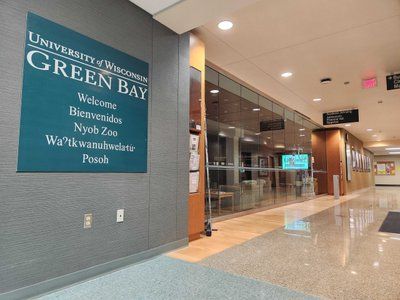By Tom Still
MADISON – Brent Haglund literally gets his hands dirty when
he describes how technology and science-driven practices are helping farmers
and other landowners.
Haglund, an ecologist who heads the Madison-based Sand
County Foundation, showed up to a recent meeting of the Wisconsin Cleantech
Network with buckets of soil to demonstrate how no-till agriculture can help
farmers and ranchers conserve their valuable land – and make more money.
The no-till buckets showed deeper root systems and held
together firmly when removed, while soil from tilled lands was more easily fragmented
and lacked root density.
Read this commentary in the Wisconsin State Journal here.
“These are advantages to no-till you can see,” Haglund told
the crowd, “but there are many that don’t immediately meet the eye.”
No-till farming is a way to grow crops or pasture from year
to year without disturbing the soil through tillage. It increases the amount of
water that infiltrates into the soil and boosts organic matter retention and
cycling of nutrients in the soil. In places prone to flooding or wind damage,
no-till greatly reduces soil erosion and loss of nutrients. No-till also increases
the amount and variety of life in the soil, including organisms that suppress
disease. Farmers save time through reduced tilling and there’s less wear and
tear on equipment, which also use less fuel.
The main benefit of no-till is improved soil biological
fertility, which makes the land more resilient over time while making farms and
ranches more efficient.
“More farmers today are focused on net profit per acre than
yield per acre, which is why no-till can be attractive,” Haglund said. “They
are committing to conserving their own land, showing a better bottom line and
saving time for themselves.”
There’s nothing new about no-till but its advantages have
been made increasingly clear through science. As Haglund noted, many of the
same farmers and ranchers who have switched to no-till are early adopters of
other tools – some as common as portable electronic devices – to track and
better control use of fertilizer, water and pesticides.
“Farm technology is more than just the do-dads and the
drones,” he said. “It’s a mix of things that are providing better analytics, cutting
energy use, saving water, preserving the land while adding to the bottom line.”
Of course, technology is nothing new in farming in Wisconsin
or elsewhere. The harvesting machine, the twine binder, malted milk, the milk
butterfat test, the round silo, safe canning methods for peas and tuberculin
tests for cattle were all Wisconsin inventions in the 1800s alone. The pace of
innovation hasn’t slowed in the last century-plus.
At the Great Lakes Bioenergy Research Center on the
UW-Madison campus, researchers are engaged in a variety of projects to help
farmers. Some examples:
“Smartscape” is a user-friendly planning software that
allows farmers, conservation agencies and other land managers to model and map
changes in specific parts of the landscape, piece-by-piece.
After selecting a potential change – for example, moving
from a row crop such as corn on highly erodible land to a perennial grass bioenergy
crop – users can measure potential differences in how the ecosystem is working.
These include protecting pollinator habitat, soil runoff reductions and carbon
sequestration, which can be compared to changes in net income.
Another
technique is better use of marginal lands, which are previously unused patches
on the edges of farms, to maintain and enhance pollinator habitat, “beneficial
bugs” and soil runoff, all while potentially providing an economic benefit to
farmers in the form of bioenergy crops.
The
Great Lakes center, housed at the Wisconsin Energy Institute, has also
discovered a chemical compound that can someday be used as a fungicide in
sustainable and conventional farming.
Poacic acid may have the potential to replace copper
sulfate, which is used as a fungicide in organic agriculture but accumulates to
toxic levels in soil. It could also be used in combination with synthetic
fungicides to lower dosage or reduce the chances of developing resistance.
Poacic acid could give farmers a natural fungicide choice at
a time when traditional fungicide resistance is on the rise, and warming
temperatures are causing fungal pathogens to spread northward.
The Sand County Foundation’s work with farmers and ranchers outside
Wisconsin has produced other benefits, including preservation of the Louisiana Black
Bear, the Greater Sage Grouse and the Milkweed Monarch Butterfly, all by making
use of private landowners and the profit motive versus government regulation.
“Technology is helping farmers and ranchers become more
efficient while aiding their efforts to be better stewards of land, water and
wildlife,” Haglund said.
That’s a double bottom-line: Good for the environment and better
for the farmers and ranchers who help to sustain it.





